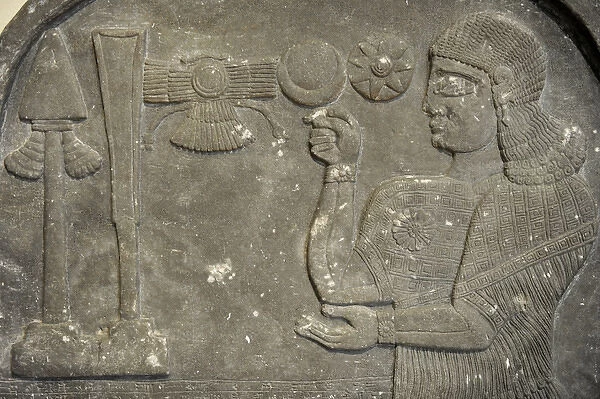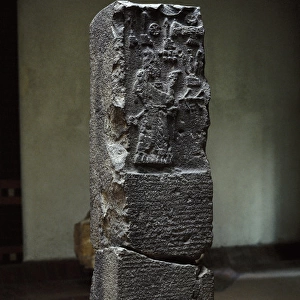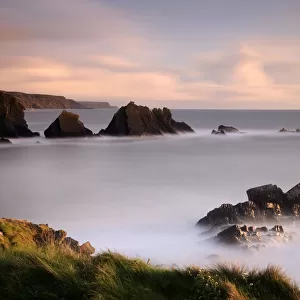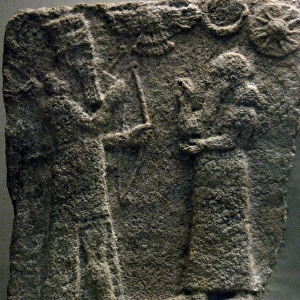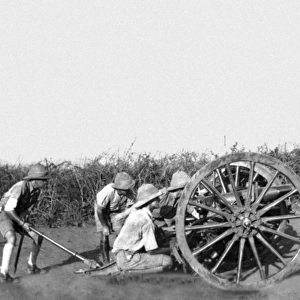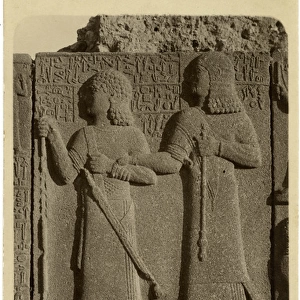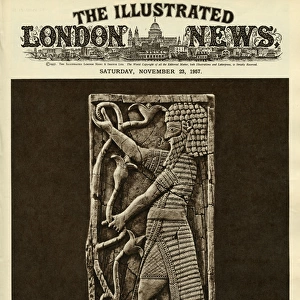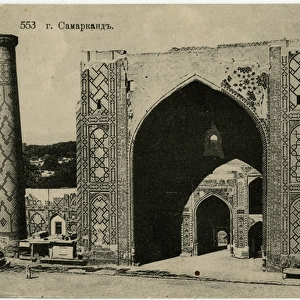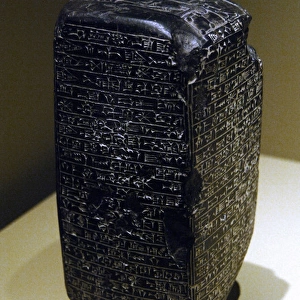Home > Asia > Turkey > Istanbul
Stele with relief depicting Assyrian official Bel-Harran-bel
![]()

Wall Art and Photo Gifts from Mary Evans Picture Library
Stele with relief depicting Assyrian official Bel-Harran-bel
Stele with relief depicting Assyrian official Bel-Harran-beli-usur praying in front of divine symbols. 8th century BC. Marble. From Tel-Abda. Archaeological Museum. Museum of Ancient Orient. Istanbul. Turkey
Mary Evans Picture Library makes available wonderful images created for people to enjoy over the centuries
Media ID 14335520
© Thaliastock / Mary Evans
Archaeological Assyria Assyrian Chamberlain Dignitary Divine Governor Istanbul Marble Official Orient Pray Praying Reign Shalmaneser Stela Stele Symbol
EDITORS COMMENTS
Bel-Harran-beli-usur, an Assyrian Official in Devotion: A Detailed Analysis of the 8th Century BC Marble Stele from Tel-Abda, Istanbul Archaeological Museum The intricately carved marble stele from Tel-Abda, housed in the Istanbul Archaeological Museum, offers a captivating glimpse into the religious and political life of the Assyrian Empire during the 8th century BC. The stele, featuring the relief of Bel-Harran-beli-usur, a high-ranking Assyrian official, is a testament to the rich artistic and historical heritage of ancient Assyria. Bel-Harran-beli-usur, depicted in the scene, is shown in a humble posture, with his hands folded in prayer before divine symbols. The official, who held the titles of chamberlain and governor, is believed to have served under the reigns of kings Shalmaneser V and Tiglath-pileser III. The stele's interior scene reveals the intimate connection between the Assyrian elite and their gods, emphasizing the importance of religion in the daily life of the Assyrian court. The meticulously carved details of the stele showcase the skill and craftsmanship of the Assyrian artists of the time. Bel-Harran-beli-usur's regal attire, adorned with intricate patterns and symbols, highlights his high status. The divine symbols, including the winged sun disk and the bull, are depicted with great precision and reverence, reflecting the deep-rooted religious beliefs of the Assyrian people. The stele from Tel-Abda is a valuable historical artifact that offers insights into the religious and political climate of the Assyrian Empire during the 8th century BC. Its intricate details and exquisite craftsmanship make it a significant addition to the vast collection of ancient art at the Istanbul Archaeological Museum, shedding light on the rich cultural heritage of the ancient world.
MADE IN AUSTRALIA
Safe Shipping with 30 Day Money Back Guarantee
FREE PERSONALISATION*
We are proud to offer a range of customisation features including Personalised Captions, Color Filters and Picture Zoom Tools
SECURE PAYMENTS
We happily accept a wide range of payment options so you can pay for the things you need in the way that is most convenient for you
* Options may vary by product and licensing agreement. Zoomed Pictures can be adjusted in the Cart.

